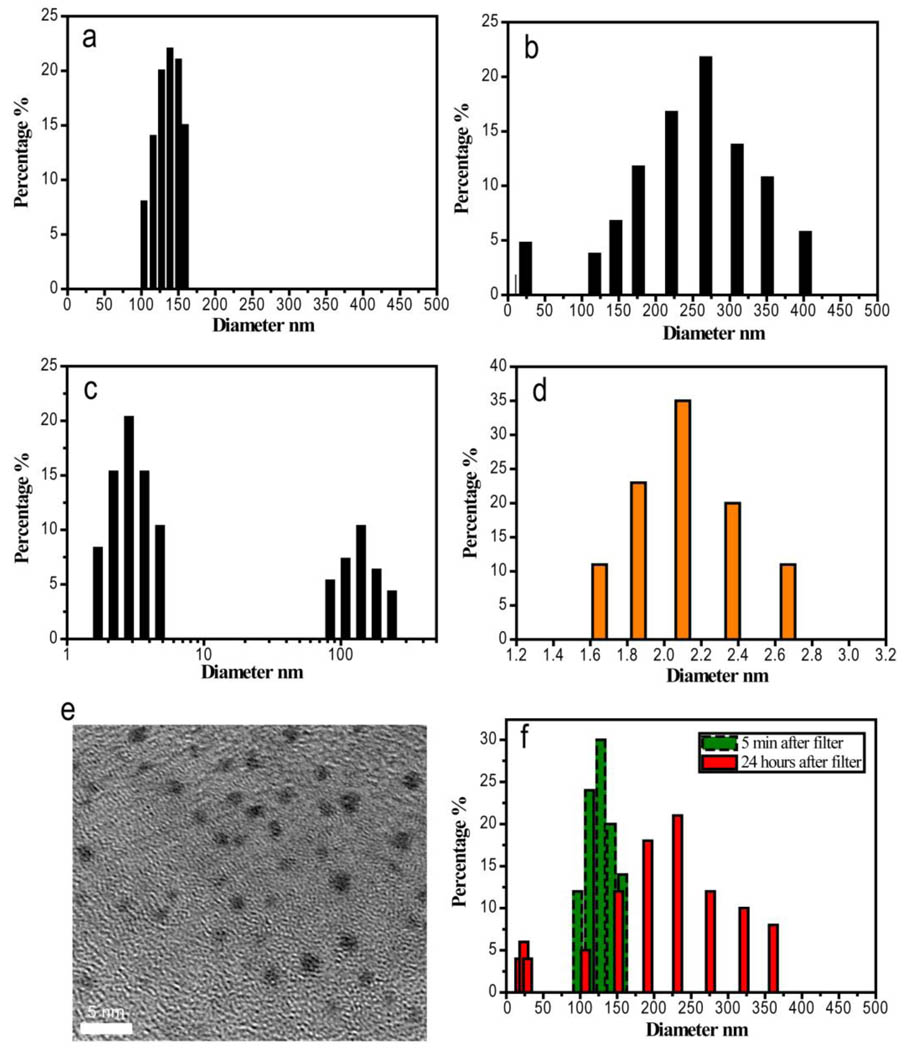Figure 1.
DLS and TEM studies on the formation of GS-Au(I) polymeric NPs and orange-emitting GS-AuNPs (OGS-AuNPs) in aqueous solution. The mean hydrodynamic diameter (HD) of GS-Au(I) polymeric NPs right after mixing HAuCl4 and GS in aqueous solution was around 120 nm (a); Two components with HDs around 20 nm and 270 nm respectively were observed in the solution after 48 hours (b). After two weeks, two components with HDs around 2 nm and 120 nm were observed in the solution (c). After purification, the HD of OGS-AuNPs in aqueous solution is around 2.1±0.4 nm (d). A typical TEM image of orange emitting GS-AuNPs shows that the mean size of the NPs is around 1.7±0.3 nm (e). To remove the possibility of 2nm component directly grown from free gold ions and glutathione in the solution, we used a size cutoff filter to remove gold ions and glutathione molecules in the solution but retained ~120 nm GS-Au(I) polymeric NPs in the solution. After 24 hours, two polymeric NPs with mean HDs of 20 nm and 220 nm were observed from the solution (f).

